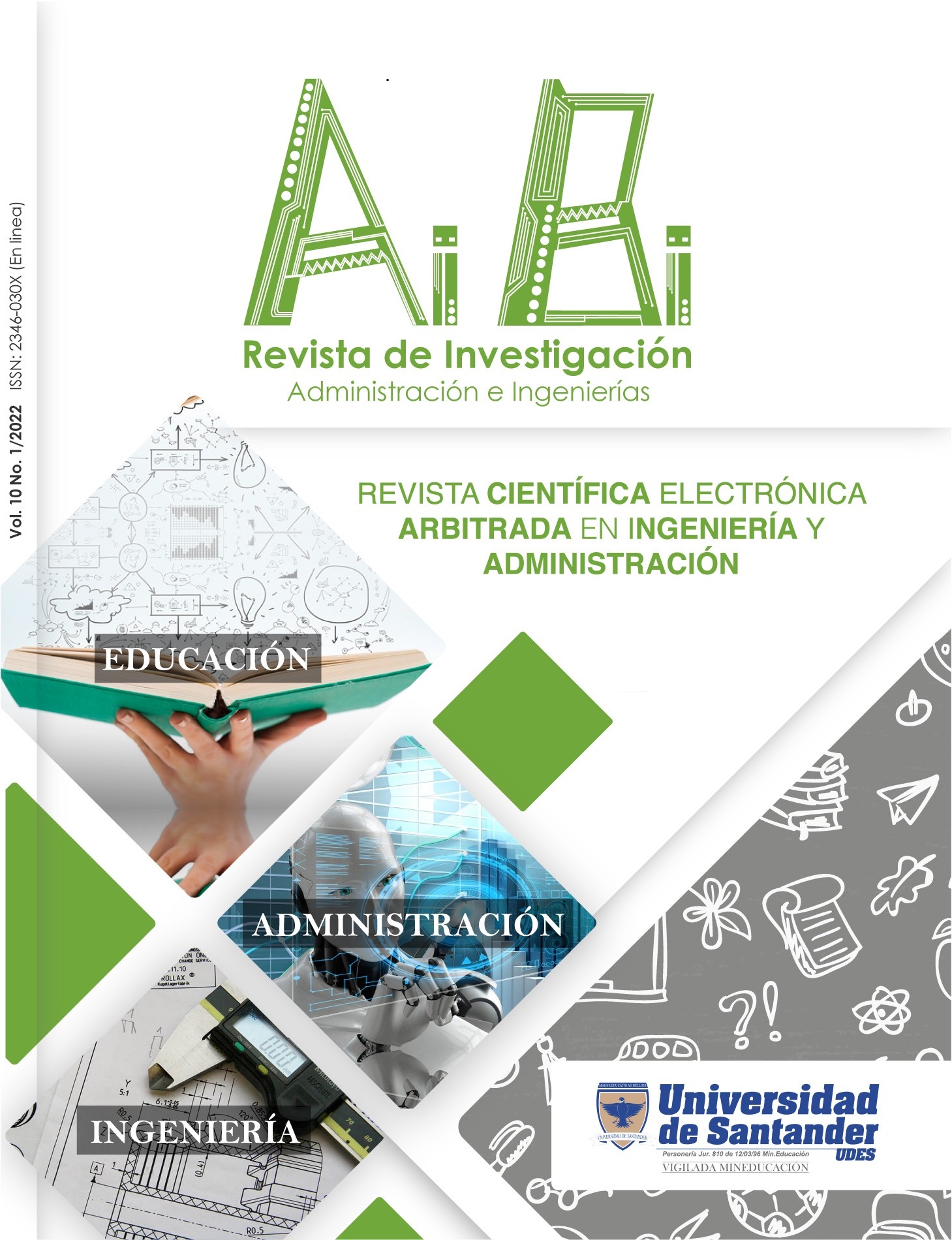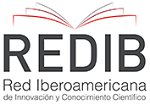Discrete event simulation model to evaluate inventory policies in a specialized restaurant
DOI:
https://doi.org/10.15649/2346030X.2745Keywords:
simulation, meat products, preparation, inventory, distribution, Simul8®Abstract
The use of simulation allows a company to understand its processes and, by modeling its problems, find solutions that fit its needs and allow them to take corrective measures so that their processes are properly executed. For this reason, discrete simulation is used as a tool to understand the food production process of a microenterprise in the city, whose mission is to satisfy its customers with the best roast, breaded chicken and the best products prepared from the region. This project will focus on identifying possible flaws in your process and evaluating solutions that fit the company's resources and generate good financial results. For the development of this work, the process of roasting and breading chickens (because they are the main products for sale) will be studied. In addition, its purpose is to evaluate the inventory capacity, that is, to identify if there is excess inventory, or on the contrary, a shortage that is generating losses or cost overruns in the company and from there, be in the position to take corrective measures.
References
R. Ronaldo, “Measuring the performance of poultry business through effective supply chain management skills,” Uncertain Supply Chain Manag., vol. 8, no. 1, pp. 55–66, 2020, doi: 10.5267/j.uscm.2019.8.006.
X. Wen, L. Li, S. Sun, Q. He, y F. S. Tsai, “The contribution of chicken products’ export to economic growth: Evidence from china, the United States, and Brazil,” Sustain., vol. 11, no. 19, 2019, doi: 10.3390/su11195253.
J.C. Restrepo, J.F. Rave y G. Peña, “Planteamiento de políticas para la solución de problemas en Pymes del sector de productos cárnicos,” 2005.
J.D.J.D. Sterman, Business dynamics: Systems thinking and modeling for a complex world with CD-ROM, vol. 53. Irwin/McGraw-Hill, 2000.
C.A. Gil-Gonzalez, J.P. Orejuela-Cabrera y D. Peña-Calderon, “El Problema de patrones de corte, clasificación y enfoques/Cutting stock problem, classification and approaches,” Prospectiva, vol. 15, no. 1, pp. 112–126, 2017, doi: 10.15665/rp.v15i1.718.
C.E. Golden, M.J. Rothrock y A. Mishra, “Mapping foodborne pathogen contamination throughout the conventional and alternative poultry supply chains,” Poult. Sci., p. 101157, 2021, doi: 10.1016/j.psj.2021.101157.
N. Al-Theeb, H.J. Smadi, T.H. Al-Hawari y M.H. Aljarrah, “Optimization of vehicle routing with inventory allocation problems in Cold Supply Chain Logistics,” Comput. Ind. Eng., vol. 142, no. February, p. 106341, 2020, doi: 10.1016/j.cie.2020.106341.
S.M. Hosseini-Bamakan, S. Ghasemzadeh-Moghaddam y S. Dehghan-Manshadi, “Blockchain-enabled pharmaceutical cold chain: Applications, key challenges, and future trends,” J. Clean. Prod., vol. 302, p. 127021, 2021, doi: 10.1016/j.jclepro.2021.127021.
C.M. Galanakis, ”Sustainable meat production and processing”, 2018.
S. Minegishi y D. Thiel, “System dynamics modeling and simulation of a particular food supply chain,” Simul. Pract. Theory, vol. 8, no. 5, pp. 321–339, 2000, doi: 10.1016/S0928-4869(00)00026-4.
X. Xiao et al., “A quantitative risk assessment model of Salmonella contamination for the yellow-feathered broiler chicken supply chain in China,” Food Control, vol. 121, 2021, doi: 10.1016/j.foodcont.2020.107612.
F. Asche, A.L. Cojocaru y B. Roth, “The development of large scale aquaculture production: A comparison of the supply chains for chicken and salmon,” Aquaculture, vol. 493, pp. 446–455, 2018, doi: 10.1016/j.aquaculture.2016.10.031.
K.S. Huang y F. Gale, “Food demand in China: Income, quality, and nutrient effects,” China Agric. Econ. Rev., vol. 1, no. 4, pp. 395–409, 2009, doi: 10.1108/17561370910992307.
J. Izar-Tenorio, P. Jaramillo, W.M. Griffin y M. Small, “Impacts of projected climate change scenarios on heating and cooling demand for industrial broiler chicken farming in the Eastern U.S,” J. Clean. Prod., vol. 255, 2020, doi: 10.1016/j.jclepro.2020.120306.
M.S. Ramirez, M. Zapata, S. Castro y R.A. Ortiz-Garcia, “Análisis de la producción de productos alimenticios tipo snacks mediante simulación de eventos discretos en una empresa de Medellín”, Rev. Prospect., vol. 17, no. 1, pp. 33–41, 2019, doi: 10.15665/rp.v17i1.1794.
Y.C. Chang, W.C. Chen, Y.N. Yang y H.C. Chao, “A flexible web-based simulation game for production and logistics management courses,” Simul. Model. Pract. Theory, vol. 17, no. 7, pp. 1241–1253, 2009, doi: 10.1016/j.simpat.2009.04.009.
A. Tique-Cifuentes y D.F. Chacon-Gomez, “Modelamiento de un clúster de alta disponibilidad para la implementación de un sistema E-Commerce en MIPYMES del sector de alimentos de Bogotá,” UNIVERSIDAD DISTRITAL FRANCISCO JOSÉ DE CALDAS, 2019.
D.A. Velez, F. Ceballos y G. Sanchez-Torres, “Simulation-Based Improvement Procedure for Small-Scale Shoe Manufacturing Companies,” J. Adv. Manuf. Syst., vol. 17, no. 01, pp. 23–33, 2018, doi: 10.1142/S0219686718500026.
P. A. Sanchez, F. Ceballos y G.S. Torres, “A dressmaking factory production process analysis modeling and simulation,” Cienc. e Ing. Neogranadina, vol. 25, no. 2, pp. 137–150, 2015.
R. Lovreglio, A. Fonzone, L. dell’Olio y D. Borri, “A study of herding behaviour in exit choice during emergencies based on random utility theory,” Saf. Sci., vol. 82, pp. 421–431, 2016, doi: 10.1016/j.ssci.2015.10.015.
O. Quiroga, G. Rosseti, L.M. Arcusin y D. Costa, “Modelos de simulación para el estudio de empresas productivas,” Rev. Iberoam. Ing. Ind., vol. 1, no. 2, pp. 02–23, 2009.
C. Kieran, E. Mark, T. Jillian y T. Stanley, Simulation Modeling with SIMUL8, 4.1. Visual Thinking International, 2007.
STATGRAPHICS, “A Statistical Graphics Software System,” Disasters, vol. 12, no. 4, p. 18, 1988, [Online]. Available: http://onlinelibrary.wiley.com/doi/10.1111/j.1467-7717.1988.tb00682.x/abstract.
C. Martínez, “Estadística y muestreo”, 13th ed. Bogotá, Colombia: ECOE ediciones Ltda., 2016.
J.J. López-Andrés, A.A. Aguilar-Lasserre, L.F. Morales-Mendoza, C. Azzaro-Pantel, J.R. Pérez-Gallardo y J.O. Rico-Contreras, “Environmental impact assessment of chicken meat production via an integrated methodology based on LCA, simulation and genetic algorithms,” J. Clean. Prod., vol. 174, pp. 477–491, 2018, doi: 10.1016/j.jclepro.2017.10.307.
R.M. Vanalle, W.C. Lucato, M. Vieira-Júnior y I.D. Sato, “Uso de la Simulación Monte Carlo para la Toma de Decisiones en una Línea de Montaje de una Fábrica,” Inf. tecnológica, vol. 23, no. 4, pp. 33–44, 2012, doi: 10.4067/S0718-07642012000400005.
J. Banks, Handbook of Simulation: Principles, Methodology, Advances, Applications, and Practice, 2nd ed. New York: John Wiley & Sons, 1998.
P. Sharma, “Discrete-event simulation,” Int. J. Sci. Technol. Res., vol. 4, no. 04, pp. 136–140, 2015.
M. Ahmed y A.-S. K. Pathan, “Data Analytics Concepts, Techniques, and Applications”, vol. 91, no. 5. 2012.
D. C. Montgomery, “Diseño de Experimentos,” 2004.
S. J. Aboud, M. Al Fayoumi y M. Alnuaimi, “Verification and validation of simulation models,” in Handbook of Research on Discrete Event Simulation Environments: Technologies and Applications, 2009, pp. 58–74.
L. Gulyás y G. Kampis, “Models, Representations and Comparisons in Computer Simulations,” Procedia Comput. Sci., vol. 66, pp. 5–12, 2015, doi: 10.1016/j.procs.2015.11.003.
D. Kibira, Q. Hatim, S. Kumara y G. Shao, “Integrating data analytics and simulation methods to support manufacturing decision making,” in Proceedings - Winter Simulation Conference, 2016, vol. 2016-Febru, pp. 2100–2111, doi: 10.1109/WSC.2015.7408324.
B. Ceballos, M. T. Lamata, D. Pelta y J. M. Sanchez, “El método topsis relativo vs. Absoluto,” Recta, vol. 14, no. 2, pp. 181–192, 2013.
Downloads
Published
How to Cite
Downloads
Issue
Section
License
The journal offers open access under a Creative Commons Attibution License

This work is under license Creative Commons Attribution (CC BY 4.0).










